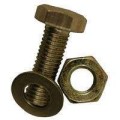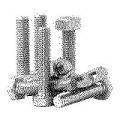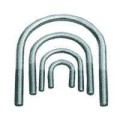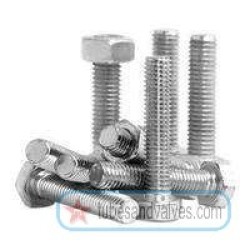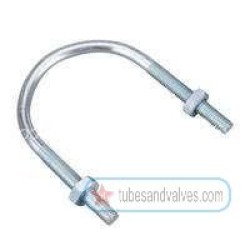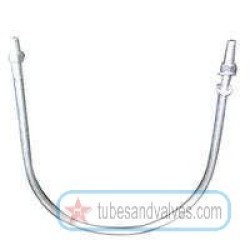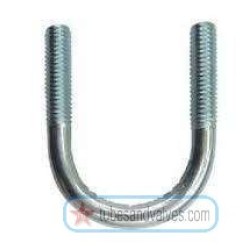Introduction to Bolts and Nuts
Bolts and nuts are what we call the ultimate fastening devices used to build and secure a wide variety of components. They are the basic methods used to assemble and hold parts or objects together in machines, structures, or other manufactured objects. To understand how essential bolts and nuts are, one should understand how to use them properly and how to choose the right ones for the application.What are bolts and nuts?
Bolts are fasteners with a head and thread groove, which enable them to be attached to a corresponding nut. The bolt is inserted in the nut, and it is tightened or loosened by rotating either the nut or the bolt head by hand or by using a tool. While the term “bolt” is commonly used, there are actually several kinds of bolts, including cap screws, lag bolts, eye bolts, set screws, hanger bolts, bed bolts, U bolts, T bolts, and many more. Nuts have a threaded interior that fits the thread of the bolt, and they are tightened by rotating the nut with a wrench.Uses of bolts and nuts
Bolts and nuts can be used in a variety of applications. The most common application is to secure two or more components together. This is the foundation of mechanical assembly and manufacturing. Bolts and nuts are especially important in the automotive, building, and construction industries, as they are used to assemble cars and airplanes, to construct buildings, bridges, and other structures, and to join plumbing and electrical components. Bolts and nuts are also commonly used to join two or more pieces of wood, such as in furniture and cabinetry. Finally, they are often used to secure objects or appliances to the walls.Types of bolts and nuts
There are many different types of fasteners, each with its own specific purpose and characteristics. The three main categories of bolts and nuts are: metric, imperial (U.S.), and specialty. Metric bolts have a straight shank, a hexagonal head, and are measured in millimeters (mm). Imperial bolts have a tapered shank, a square head, and are measured in inches (in). Specialty bolts have other shapes and forms, and they are designed to be used in specific applications. They include but are not limited to, wing nuts, U bolts, carriage bolts, lag bolts, square head bolts, and flange bolts.Choosing the right bolt and nut
Choosing the right type of bolt and nut for your application is essential for long-term performance and safety. Different types of materials, such as steel, aluminum, brass, or bronze, are often specified for specific projects. The size of the bolt and nut also needs to be appropriate for the application, and this can depend on the size and weight of the components they are attaching. The grade of the bolt also needs to be considered as it indicates the strength of the bolt and nut, which will determine the load they can safely be subjected to. The right combination of grade, material, and size of the bolts and nuts will ensure a reliable and sturdy connection.Conclusion
Bolts and nuts are essential fastening devices that are used in a variety of applications. They are available in several types, materials, and sizes, which enables them to be used in almost any application. Understanding how to choose the right combination of grade, material, and size of bolts and nuts is essential to ensure the long-term performance and safety of the project. Furthermore, learning how to properly use and install bolts and nuts is also important for successful and secure fastening.Bolt & Nuts FAQ's
Bolt & Nuts FAQ's
What is a bolt?
A bolt is a threaded fastener that is used to join two or more objects together.
What is a nut?
A nut is a small, usually hexagonal, piece of metal with a threaded hole in the center. It is used to secure a bolt in place.
BRAND: BEST INDIAN MAKE
Model: 18001
Product Description: 1/2 inch NB x 1 1/2 inch NB Long MS Bolt Nut with 2 washers
The 1/2 inch NB x 1 1/2 inch NB Long MS Bolt Nut with 2 washers is a high-quality mechanical fastener designed to securely join two or more objects together. This bolt nut is made from mild steel, which offers high stre..
Price INR 16.00
BRAND: BEST INDIAN MAKE
Model: 18001
15mm or 1/2 inch NB GI U CLAMP 8MM THK
The 15mm or 1/2 inch NB GI U Clamp 8mm THK is a high-quality clamp designed for a range of industrial and commercial applications. This clamp is made from galvanized iron, which provides excellent resistance to corrosion and rust, making it ideal for use in h..
Price INR 9.00
BRAND: BEST INDIAN MAKE
Model: 18002
Product Description: 40mm or 1 1/2 inch NB GI U Clamp 10mm THK..
Price INR 25.00
BRAND: BEST INDIAN MAKE
Model: 18003
50mm or 2 inch NB GI U Clamp 12mm THKThe 50mm or 2 inch NB GI U Clamp 12mm THK is a versatile and strong clamping solution designed for use in a wide range of applications. This clamp is made from high-quality galvanized iron, which gives it excellent corrosion resistance and durability. The 12mm ..
Price INR 58.00
BRAND: BEST INDIAN MAKE
Model: 18001
Product Description: 1/2 inch NB x 2 inch NB Long MS Bolt Nut with 2 WasherThe 1/2 inch NB x 2 inch NB Long MS Bolt Nut with 2 Washer is an essential component in construction, manufacturing, and maintenance industries. This product is designed to be used in fastening and joining heavy-duty materi..
Price INR 17.00
BRAND: BEST INDIAN MAKE
Model: 18001
20mm or 3/4 inch NB GI U CLAMP 8MM THK
The 20mm or 3/4 inch NB GI U Clamp with 8mm Thickness is a highly useful product for industrial and commercial applications. This U Clamp is made from Galvanized Iron (GI) and has a thickness of 8mm, making it strong, durable, and long-lasting. This heavy-dut..
Price INR 11.00
BRAND: BEST INDIAN MAKE
Model: 18002
50mm or 2 inch NB GI U Clamp 10mm THK
Our 50mm or 2 inch NB GI U Clamp 10mm THK is a high-quality clamp designed for use in a variety of applications. Made from galvanized iron, this clamp is durable and resistant to corrosion, making it ideal for use in harsh environments. The clamp is designed to ..
Price INR 27.00
BRAND: BEST INDIAN MAKE
Model: 18003
Product Description: 65mm or 2 1/2 inch NB GI U Clamp 12mm THK
Our 65mm or 2 1/2 inch NB GI U Clamp 12mm THK is a high-quality product that is designed to provide a reliable and secure solution for pipe and tube installations. This U clamp is made from galvanized iron, which makes it resistant to ..
Price INR 58.00
BRAND: BEST INDIAN MAKE
Model: 18001
Product Description: 1/2 inch NB x 2 1/2 inch NB Long MS Bolt Nut with 2 washer
The 1/2 inch NB x 2 1/2 inch NB long MS bolt nut with 2 washer is a versatile and reliable fastening solution for various industrial applications. This bolt nut is made of high-quality mild steel, ensuring strength and d..
Price INR 22.00
BRAND: BEST INDIAN MAKE
Model: 18001
Product Description: 25mm or 1 inch NB GI U Clamp 8mm THK
The 25mm or 1 inch NB GI (Galvanized Iron) U Clamp 8mm THK is a versatile plumbing accessory designed for securing pipes and tubes to walls, floors, and ceilings. With its sturdy construction and reliable performance, this U clamp is ideal fo..
Price INR 12.00
BRAND: BEST INDIAN MAKE
Model: 18002
Product Description: 65mm or 2 1/2 inch NB GI U Clamp 10mm THK
If you're looking for a reliable and sturdy way to secure your pipes, look no further than our 65mm or 2 1/2 inch NB GI U Clamp.
Constructed from high-quality galvanized iron, our U clamp is designed to withstand the elements and kee..
Price INR 29.00
BRAND: BEST INDIAN MAKE
Model: 18003
Product Description: 80mm or 3 inch NB GI U Clamp 12mm THKThe 80mm or 3 inch NB GI U Clamp 12mm THK is a heavy-duty clamp made from galvanized iron for use in structural and piping applications. It is designed to provide maximum support and stability to pipes, tubes, and other similar objects whic..
Price INR 69.00
BRAND: BEST INDIAN MAKE
Model: 18001
Product Description: 1/2 inch NB x 3 inch NB Long MS Bolt Nut with 2 washer
Our 1/2 inch NB x 3 inch NB Long MS Bolt Nut with 2 washer is a high-quality fastener that is designed to provide reliable and long-lasting performance. This bolt nut is made from high-grade mild steel, which makes it durabl..
Price INR 24.00
BRAND: BEST INDIAN MAKE
Model: 18003
100mm or 4 inch NB GI U CLAMP 12MM THK
The 100mm or 4 inch NB GI U Clamp 12mm THK is a versatile and durable clamp that is designed to securely hold pipes and tubes in place. Made from high-quality galvanized iron, this clamp is resistant to corrosion and rust, making it ideal for use in harsh envir..
Price INR 86.00
BRAND: BEST INDIAN MAKE
Model: 18004
100mm or 4 inch NB GI U Clamp 16mm THK
The 100mm or 4 inch NB GI U Clamp 16mm THK is a high-quality clamp that is designed to securely fasten pipes and tubes in a variety of applications. Made from galvanized iron, this clamp is extremely durable and resistant to corrosion, making it ideal for use..
Price INR 204.00
BRAND: BEST INDIAN MAKE
Model: 18001
32mm or 1 1/4 inch NB GI U CLAMP 8MM THK
The 32mm or 1 1/4 inch NB GI U Clamp 8mm THK is a versatile and durable clamp that is used in a variety of applications. This clamp is made of galvanized iron, which makes it resistant to rust and corrosion. It is designed to hold pipes securely in place and ..
Price INR 13.00
BRAND: BEST INDIAN MAKE
Model: 18002
80mm or 3 inch NB GI U CLAMP 10MM THK
Product Description:
The 80mm or 3 inch NB GI U Clamp 10mm THK is a high-quality clamp designed to provide a secure and reliable connection for pipes and tubes. This clamp is made from galvanized iron, which makes it highly resistant to corrosion and rusting..
Price INR 34.00
BRAND: BEST INDIAN MAKE
Model: 18002
100mm or 4 inch NB GI U Clamp 10mm THK
The 100mm or 4 inch NB GI U Clamp 10mm THK is a versatile and robust product designed to secure and support pipes in a wide range of industrial applications. This U clamp is made of galvanized iron, which makes it highly resistant to rust, corrosion, and other ..
Price INR 38.00
BRAND: BEST INDIAN MAKE
Model: 18003
125mm or 5 inch NB GI U Clamp 12mm THK
The 125mm or 5 inch NB GI U Clamp 12mm THK is a high-quality, durable clamp designed for use in a variety of industrial and construction applications. Made from galvanized iron, this clamp is resistant to corrosion and rust, ensuring long-lasting performance ..
Price INR 101.00
BRAND: BEST INDIAN MAKE
Model: 18004
Product Description: 125mm or 5 inch NB GI U Clamp 16mm THK
Our 125mm or 5 inch NB GI U Clamp 16mm THK is a high-quality clamping solution that is designed to provide a secure and reliable hold on pipes and tubes. Made from galvanized iron, this clamp is highly durable and resistant to rust and corr..
Price INR 223.00
BRAND: BEST INDIAN MAKE
Model: 18001
40mm or 1 1/2 inch NB GI U Clamp 8mm THK
The 40mm or 1 1/2 inch NB GI U Clamp 8mm THK is a versatile and durable clamp designed for use in a wide range of applications. Made from high-quality galvanized iron, this clamp is built to last and can withstand even the toughest conditions.
With a nominal ..
Price INR 14.00
BRAND: BEST INDIAN MAKE
Model: 18001
Product Description: 1/2 inch NB x 4 inch NB Long MS Bolt Nut with 2 washerIf you're in need of a sturdy and reliable bolt nut with washer for your construction or automotive needs, look no further than the 1/2 inch NB x 4 inch NB Long MS Bolt Nut with 2 washer. This product is made from high-qual..
Price INR 31.00
BRAND: BEST INDIAN MAKE
Model: 18003
150mm or 6 inch NB GI U CLAMP 12MM THK
A 150mm or 6 inch NB GI U clamp with a thickness of 12mm is an essential product for anyone looking to secure pipes and tubes in an industrial or residential setting. The U clamp is made from galvanized iron (GI) which enhances its durability and makes it resis..
Price INR 129.00
BRAND: BEST INDIAN MAKE
Model: 18004
150mm or 6 inch NB GI U CLAMP 16MM THK
The 150mm or 6 inch NB GI U Clamp 16MM THK is a galvanized iron clamp that is used to secure pipes and tubes in place. It is designed to provide a firm grip on the pipes and prevent them from slipping or moving. This clamp is perfect for use in a variety of app..
Price INR 292.00
BRAND: BEST INDIAN MAKE
Model: 18001
50mm or 2 inch NB GI U Clamp 8mm THK
The 50mm or 2 inch NB GI U Clamp 8mm THK is a high-quality clamp designed to provide a secure and reliable connection for pipes and tubes. Made from galvanized iron, this clamp is resistant to corrosion and can withstand harsh weather conditions, making it ideal ..
Price INR 18.00
BRAND: BEST INDIAN MAKE
Model: 18002
Product Description: 150mm or 6 inch NB GI U Clamp 10mm THK
The 150mm or 6 inch NB GI U Clamp 10mm THK is a high-quality pipe clamp designed for securing pipes in various industrial applications. This clamp is made of high-grade galvanized iron, which makes it highly durable and resistant to corrosi..
Price INR 56.00
BRAND: BEST INDIAN MAKE
Model: 18003
Product Description - 200mm/8 inch NB GI U Clamp 12mm THKProduct Description - 200mm/8 inch NB GI U Clamp 12mm THK
The 200mm/8 inch NB GI U Clamp 12mm THK is a high-quality industrial clamp that is designed to hold pipes and other cylindrical objects securely. It is made of Galvanized Iron (..
Price INR 193.00
BRAND: BEST INDIAN MAKE
Model: 18004
Product Description: 200mm or 8 inch NB GI U CLAMP 16MM THK
Our 200mm or 8 inch NB GI U Clamp 16mm THK is a highly durable and reliable product designed to provide a secure and stable connection between pipes and other structures. The clamp is made from high-quality galvanized iron, which ensures th..
Price INR 312.00
BRAND: BEST INDIAN MAKE
Model: 18001
Product Description: 5/8 inch NB x 1 1/2 inch NB Long MS Bolt Nut with 2 washers
body {
font-family: Arial, sans-serif;
margin: 0;
padding: 0;
background-color: #f2f2f2;
}header {
background-color: #4CAF50;
color: white;
padding: 1em;
text-align: center;
}..
Price INR 30.00
BRAND: BEST INDIAN MAKE
Model: 18001
Introducing our 65mm or 2 1/2 inch NB GI U Clamp with an 8mm thickness, a high-quality product designed for securing and fixing pipes and tubes.This clamp is made of high-grade galvanized iron, ensuring maximum durability and resistance to corrosion. The galvanized coating also provides an extra l..
Price INR 21.00
BRAND: BEST INDIAN MAKE
Model: 18001
Product Description: 80mm or 3 inch NB GI U Clamp 8mm THK80mm or 3 inch NB GI U Clamp 8mm THK
Our 80mm or 3 inch NB GI U Clamp 8mm THK is a durable and reliable solution for securing pipes and tubes in construction projects. Made from galvanized iron, this clamp is designed to withstand harsh ..
Price INR 26.00
BRAND: BEST INDIAN MAKE
Model: 18001
Product Description: 100mm (4 inch) NB GI U Clamp 8mm Thickness
The 100mm (4 inch) NB GI U Clamp is a sturdy and reliable option for securing pipes, tubes and other materials in a variety of industrial and commercial settings. Manufactured from high-quality galvanized iron, this clamp provides exc..
Price INR 33.00
BRAND: BEST INDIAN MAKE
Model: 18003
250mm or 10 inch NB GI U CLAMP 12MM THK
The 250mm or 10 inch NB GI U Clamp 12mm THK is a high-quality clamp designed for use in a variety of industrial and commercial applications. This clamp is made from galvanized iron, which provides excellent resistance to corrosion and rust. It is also d..
Price INR 180.00
BRAND: BEST INDIAN MAKE
Model: 18004
If you're searching for a reliable and strong clamp to support your pipes and other cylindrical objects, then the 250mm or 10 inch NB GI U Clamp 16mm THK might just be what you need. Made from galvanized iron (GI) material, this clamp is designed to resist corrosion, making it perfect for outdoor us..
Price INR 348.00
BRAND: BEST INDIAN MAKE
Model: 18001
5/8 inch NB x 2 inch NB Long MS Bolt Nut with 2 washer
Our 5/8 inch NB x 2 inch NB Long MS Bolt Nut with 2 washer is a high-quality fastener that is designed to provide a secure and reliable connection between two components. This bolt nut is made from high-quality mild steel, which is known for i..
Price INR 32.00
BRAND: BEST INDIAN MAKE
Model: 18001
The 125mm or 5 inch NB GI U Clamp 8mm THK is a highly versatile and durable product that is designed for use in a wide range of applications. Made from high-quality galvanized iron, this U clamp is built to withstand the toughest conditions and provide reliable performance over the long term.One o..
Price INR 38.00
BRAND: BEST INDIAN MAKE
Model: 18003
Product Description: 300mm or 12 inch NB GI U Clamp 12mm THK
The 300mm or 12 inch NB GI U Clamp 12mm THK is a high-quality pipe clamp designed to securely hold pipes in place. This clamp is made from galvanized iron, which makes it highly durable and resistant to corrosion. The U-shape of the..
Price INR 296.00
BRAND: BEST INDIAN MAKE
Model: 18004
300mm or 12 inch NB GI U Clamp 16mm ThkOur 300mm or 12 inch NB GI U Clamp 16mm Thk is a premium quality clamp that is designed to provide a secure and sturdy connection between two pipes. Made from high-grade galvanized iron, this clamp is perfect for use in industrial and construction applicati..
Price INR 391.00
BRAND: BEST INDIAN MAKE
Model: 18001
Product Description: 5/8 inch NB x 2 1/2 inch NB Long MS Bolt Nut with 2 washer
This product is a 5/8 inch NB x 2 1/2 inch NB Long MS Bolt Nut with 2 washers. It is made of high-quality mild steel, which makes it durable and long-lasting. The bolt nut is designed to provide a secure and tight..
Price INR 36.00
BRAND: BEST INDIAN MAKE
Model: 18001
150mm or 6 inch NB GI U Clamp 8mm Thk
This 150mm or 6 inch NB GI U clamp with 8mm thickness is a durable and reliable pipe fitting solution that is designed to firmly hold pipes in place without slipping or shifting. It is made using high-quality galvanized iron, which provides exceptional resistanc..
Price INR 45.00
BRAND: BEST INDIAN MAKE
Model: 18001
Product Description: 5/8 inch NB x 3 inch NB Long MS Bolt Nut with 2 washer
This is a high-quality, durable bolt nut with two washers that is designed to provide a secure and reliable connection between two objects. The bolt nut is made from mild steel, which is known for its strength and durabili..
Price INR 38.00












































